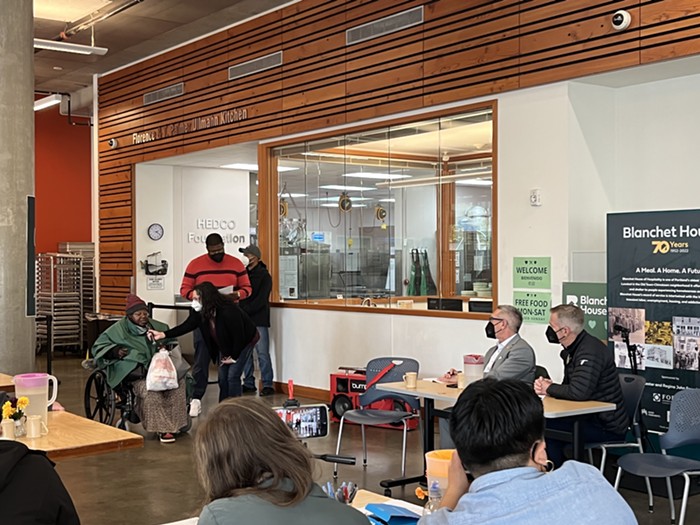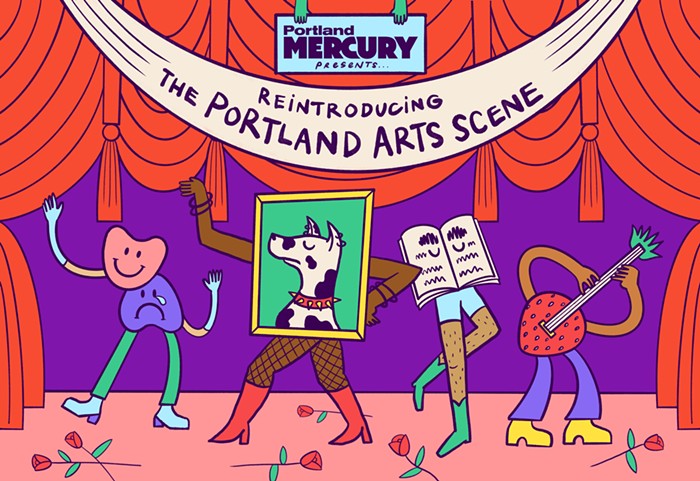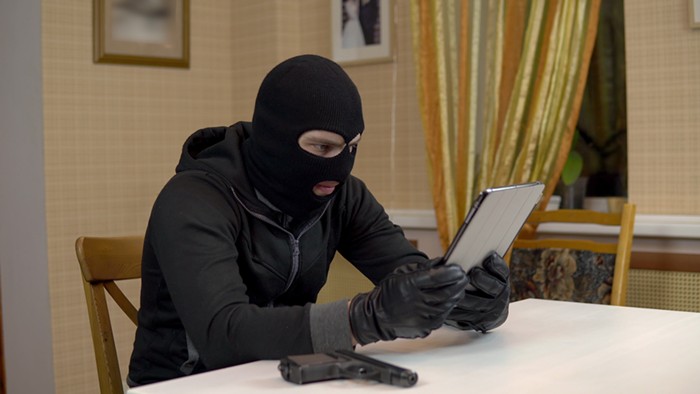THE RELEASE of Quentin Tarantino's The Hateful Eight isn't going according to plan. Probably because the plan was insanely ambitious.
Infamously averse to digital filmmaking and projection, Tarantino shot Hateful—a western starring Samuel L. Jackson, Kurt Russell, and Jennifer Jason Leigh—on 70mm, the same old-school format used by Christopher Nolan for Interstellar and Paul Thomas Anderson for The Master. But Tarantino went a step further, filming in the ultra-rare aspect ratio Ultra Panavision 70—meaning each frame of Hateful is significantly wider than the average film.
Hateful's theatrical release was to be equally unique: As of a few months ago, the plan was for an extended version of the film to play in theaters equipped to project the movie from reels of 70mm film. This "roadshow" engagement was to be featured at 100 theaters nationwide, for two weeks, before Hateful would be allowed to screen digitally.
But outfitting 100 theaters with suitable 70mm projectors—and suitable 70mm projectionists—proved impossible. This week, fewer than 50 theaters could end up showing Hateful as Tarantino intended, and those wanting to see a shorter, digitally projected version at their local multiplex will only have to wait one week instead of two.
"Since it's a format that hasn't been used in 50 years, there were obstacles," says Dan Halsted, the head programmer at the Hollywood Theatre, which will start showing the 70mm roadshow version of Hateful on Christmas Eve. "We had to have parts specifically machined to make the lenses fit and give us the biggest image possible."
That extra work will pay off. "Ultra Panavision 70 is the widest aspect ratio that exists," says Halsted. "The massive image of Ultra Panavision and the deep focus of 70mm provide an unparalleled, extremely expansive, and deeply immersive cinematic experience. It hasn't been used since 1966, and there are less than a dozen movies that were ever filmed in the format."
He's right about how immersive Ultra Panavision is. Last week, I saw a brief, silent, 70mm test reel for the film projected on the Hollywood's screen—and if nothing else, it looks amazing, thanks to Tarantino's clever use of the format. Ultra Panavision means there's more to both sides of the frame, and Tarantino's intent on making good use of that extra real estate. In some shots, he takes advantage of the image's width to allow distant background action to slowly creep into the foreground; in others, he lets conversing (or standoff-ing) characters stand a realistic distance from each other instead of crowding the shot; in others, he pulls wide—really wide—to let the audience sink into the cold beauty of the film's sprawling, snow-covered hills, slashed by endless lines of black, leafless trees.
"Going to the movies used to be a special event, but over the years, multiplexes turned moviegoing into the equivalent of eating fast food," Halsted says. "Tarantino is serving up a five-course meal." But even if people like that meal, 70mm screenings will likely remain rare. As many of the theaters that hoped to show Hateful on 70mm discovered, fickle old projectors and heavy reels of film are a lot trickier to deal with than simply programming a digital projector to play a downloaded file.
"70mm is something that commands respect," Halsted says. "It takes an immense amount of work to present properly, and requires extra care and precision that distributors and theaters aren't used to dealing with in this digital age."
Hateful's scaled-back release backs that up. But it also makes the 70mm screenings that are happening even more special. Something else, too, could add to the appeal: Over the next few days, Tarantino and some of Hateful's cast will be making "surprise appearances" at 70mm screenings around the country. Portland could very well be on the filmmaker's itinerary.
"QT is an ally of the Hollywood," Halsted says, noting that Tarantino specifically requested The Hateful Eight play at the theater. "So people should be pretty excited."
Read our review of The Hateful Eight in this week's Film Shorts.
UPDATE: In emails to the Mercury, Larry Shaw of Boston Light & Sound—the company that provided projection support for the national 70mm release of The Hateful Eight—says 100 theaters were ultimately able to play the film in 70mm. Distributors the Weinstein Company made similar claims, despite some reports of projection problems. As of January 8, 2016, the Hollywood Theatre’s Dan Halsted tells the Mercury that The Hateful Eight is “far and away the highest-grossing movie we’ve ever had,” with screenings at the Hollywood making $144,432 in the film's first week of release.




















